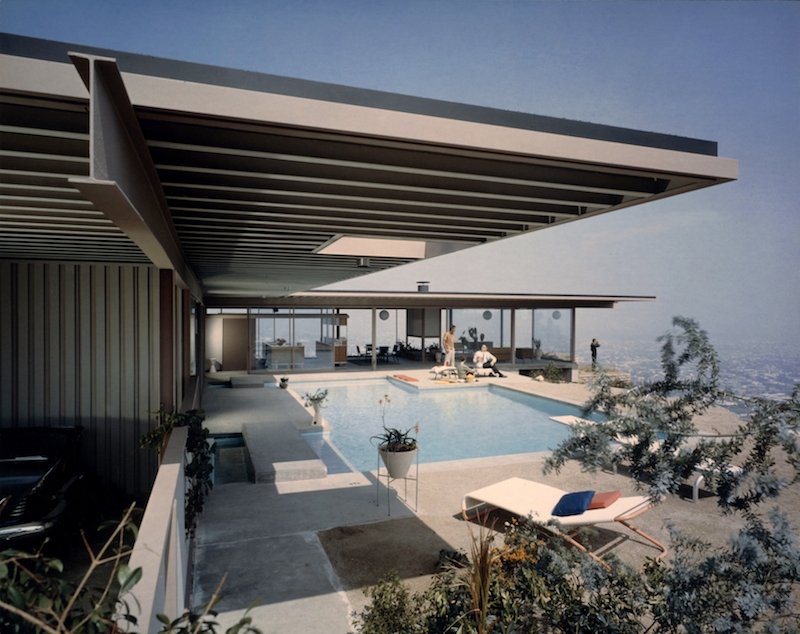Everyone knows about architecture being frozen music. The source of that conceit may be debated, but its validity is timeless and certain. For all its weightiness, architecture plays with ethereal proportion, harmony, resonance and delight: the stuff of music.
But architecture is more fundamentally about the management of light and space. Or, at least, that’s how architects see it. So photography makes better sense of architecture than any other medium does: there is something congruent between the fixed optical geometry of a camera and the way we perceive buildings.
And because images are more readily accessible than travel to remote sites, everyone’s experience of world architecture is, at least initially, based on the photographic record, not the real thing. If you think about it, that is strange. It’s as if we formed our taste in music and literature from reading reviews alone.
Significantly, the very first photographs were of buildings, not of people: Henry Fox Talbot’s tracery at Lacock or Daguerre’s view of Paris’s Boulevard du Temple, for example. The reason for this? Given an exposure time in hours for the earliest photographs, stationary buildings were easier to depict than busy, fidgety humans who left, as people do, blurred traces.
In Paris, Eugène Atget began recording the pre-modern city in the years just before the first world war. But his lens was not neutral. Lenses never are. His haunting and haunted record inspired the surrealists. Cameras lie to tell the truth: documentary photography turns out to be as much theatre as fact.
So the champions of modernism understood how photography could help their cause. The Bauhaus slogan was ‘art and technology: a new unity’. Appropriately, what we sense of the famous Bauhaus building is based on photographs, as few of us have been to Dessau.

Berenice Abbott was the discoverer of Eugène Atget. Her Changing New York (1935–1939) established a Manhattan vision of soaring verticals and giddy perspectives still persuasive today. By mid-century, the great architectural photographers of the United States, Julius Shulman and Ezra Stoller, had confirmed, if confirmation were needed, architectural photography as an art form in its own right.In Britain, modernist propaganda relied on strong images published in dramatic chiaroscuro. But many modernist buildings were, in fact, painted in pastel pinks and greens. Only when photographed on panchromatic film through a red filter (a trick of the influential Architectural Review) did they appear heroically monochrome.

When I was a boy my favourite book was Quentin Hughes’s Seaport with its gloriously grainy photographs of Liverpool. Their visible cellular structure seemed to capture both the magnificence and decay of this forlorn but romantic city. I spent my early teens trying to replicate their effects by taking pictures of wet cobbles and dockside capstans, returning to a suburban darkroom and dangerously boiling Kodak Tri-X film in Microphen developer to achieve a speed rating of 6400 ASA. I saw my city through a lens. We all do.Shulman’s pictures of the Stahl House (‘Case Study House #22’) in Los Angeles did more to promote a version of the American dream than Pierre Koenig’s original building ever did. In a photograph you cannot see the flyblown glass or the rust stains in concrete, nor hear the howls of the maid nor smell the stale cooking. Ezra Stoller actually enhanced the already sublime purity of Mies’s Seagram Building. And you could say the same for Lucien Hervé and Le Corbusier in Chandigarh.

In Germany, Bernd and Hilla Becher’s cameras turned decaying industrial infrastructure into proud monuments, finding profound beauty where less clever eyes saw only dirty, ugly wreckage. Their pupil, Candida Höfer, like Andreas Gursky, creates vast perspectives and spaces awesomely more intimidating than reality.And at about this time, architectural photography went through another reinvention. In California, the pop artist Ed Ruscha published Some Los Angeles Apartments (1965) and Thirtyfour Parking Lots (1967). Laconic, deadpan irony was added to the language of pictorial expression. Stephen Shore, ex-Warhol’s Factory, began his astonishing campaign of photographing the deafening ennui of Middle America. If you want to understand Clinton’s existential angst, look at Shore’s image of Little Rock, Arkansas (1974).

But what is that ‘reality’? Höfer and Gursky use digital manipulation, just as today’s property ads use CGI to sell swank apartments to itinerant non-doms. Here are vistas of experience and desire that dull reality cannot match. You say that they are just manipulating electrons? But that’s exactly what photography was doing in the first place.
Photography and Architecture in the Modern Age is one of the Barbican’s ‘Constructing Worlds’ exhibition series. ‘Construction’, in its several metaphors, is an idea that unites photography and architecture, as this thought-provoking show suggests. The only difference? You can retouch a photograph, but not a building.






Comments